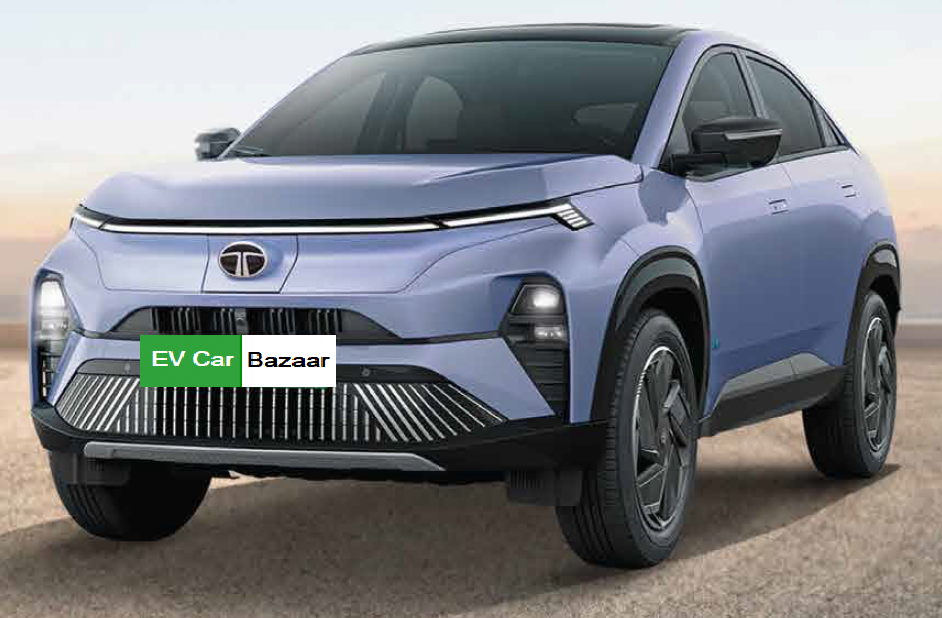
When Tata Motors unveiled the Curvv EV it wasn’t just showcasing another electric vehicle. It was making a statement. This was not about blending in but standing apart about telling Indian car buyers that the age of cookie-cutter SUVs is giving way to bold designs and ambitious promises. The Curvv EV arrived in 2024 as a coupe-inspired SUV and with it Tata announced to India that electric mobility is no longer an experiment it is the future.

The story of the Curvv is as much about Tata as it is about the Indian EV landscape. Tata has been the flagbearer of affordable EVs with the Nexon EV and Tigor EV. But with the Curvv, it went one step further by launching the electric model first before the petrol or diesel versions. In India, where EVs are often seen as derivatives of ICE cars this was a daring reversal. Tata wanted to show that the EV is not an afterthought, it is the centerpiece.
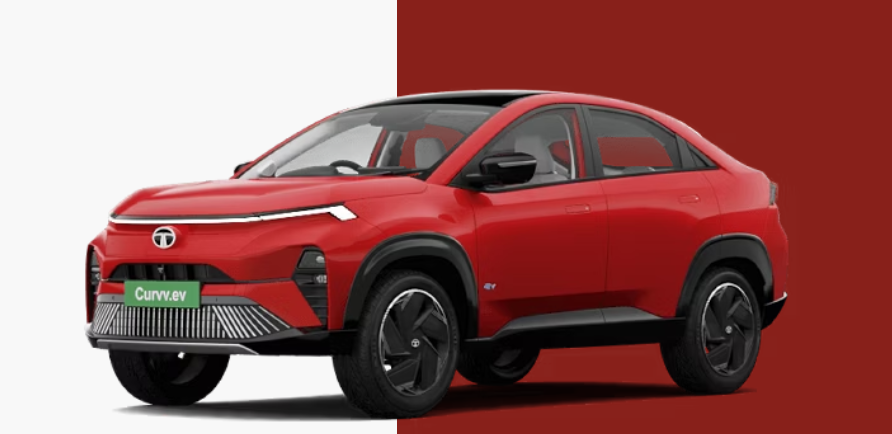
The first impression of the Curvv EV is visual drama. On Indian roads where most SUVs look functional and boxy the Curvv EV sloping roofline and coupe silhouette feel fresh. At just over 4.3meters in length, it sits comfortably in the mid-size SUV segment bridging the gap between the Nexon EV and the Harrier. Daylight running LEDs stretch across the fascia, its rear has a connected light bar and the stance is muscular yet stylish. It’s designed to grab eyeballs of urban buyers who want something futuristic but not impractical.
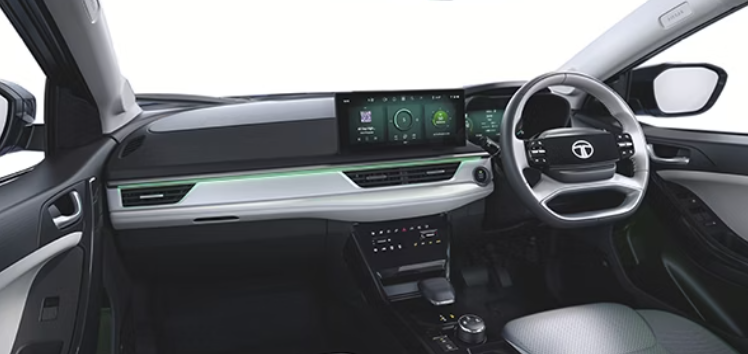
Tata has dialed up the modern minimalism. The cabin is futuristic without being cluttered. A 12.3inch infotainment system sits at the center paired with a 10.25-inch digital driver display. There’s ambient lighting that shifts the mood a JBL-tuned audio system a panoramic sunroof and clean layered surfaces across the dashboard. Unlike the Nexon EV the Curvv clearly tries to play in a more premium league.
But design and interiors are only the opening act. The heart of the story lies in performance and range.
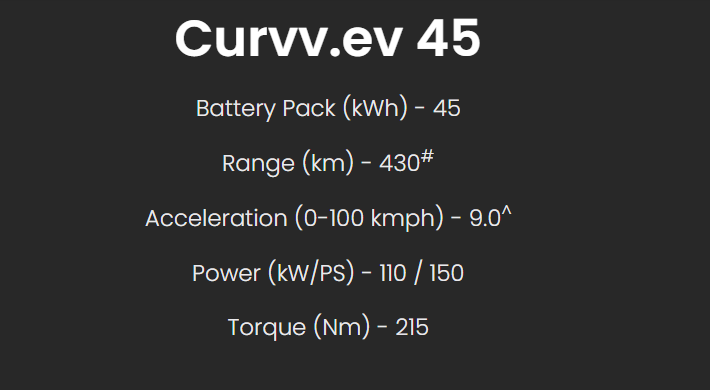
Tata has given the Curvv EV two battery pack options. The first is a 45kWh pack delivering around 148hp and 215 Nm with an ARAI-certified range of 502km.
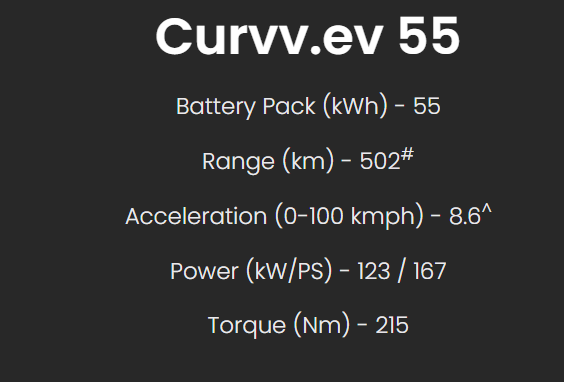
The second is a larger 55kWh pack offering 165hp and a claimed range of 585km. These numbers look impressive on paper but Indian buyers know well that lab-tested ranges rarely translate to real roads. Considering traffic, climate and usage, the Curvv EV will likely deliver between 340 and 380km in its 45kWh version and 400 to 450km in the 55kWh variant. Still this is competitive and enough for city commutes and weekend trips.
Charging times are practical if not ground breaking. With a DC fast charger at 70kW it can go from 10 to 80 percent in about 40 minutes.

On a 7.2kW AC wall charger it takes nearly eight hours for a full charge. This is sufficient for overnight charging at home though rivals like Hyundai and BYD are pushing faster charging capabilities at over 100kW.
The Curvv EV is more than just range and power. It is brimming with technology. Level 2 ADAS features bring lane assist, adaptive cruise control and collision warnings. A 360-degree camera system, six airbags, ESP and a Bharat NCAP 5-star rating ensure safety is not compromised. Vehicle-to-Load and Vehicle-to-Vehicle charging bring flexibility and over-the-air updates make sure the software remains future-ready. For buyers upgrading from Nexon EV or considering alternatives like MG ZS EV the Curvv’s feature list feels reassuringly premium.
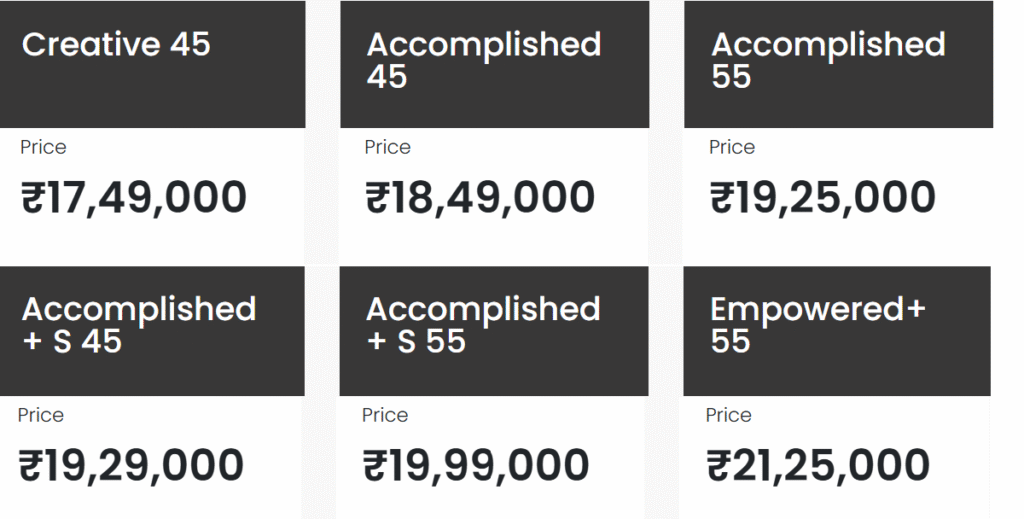
Pricing is where Tata plays its masterstroke. With an entry price of ₹17.49 lakh (ex-showroom) and going up to ₹22.24 lakh for the top Dark Edition variant the Curvv EV undercuts several rivals while offering a futuristic design and technology-laden package. It positions itself smartly between the Nexon EV and MG ZS EV a spot that was ripe for the taking.

But perhaps the most headline-worthy move is Tata’s lifetime battery warranty. For years Indian EV buyers have hesitated fearing expensive battery replacements. Tata counters this anxiety with a 15-year or unlimited km battery warranty the first of its kind in India. While it applies only to private owners and not commercial operators, it builds massive trust. Buyers no longer need to ask, What happens if the battery fails in seven years? Tata’s answer is simple we’ll cover you. This alone could tilt many purchase decisions in Curvv favor.
Every car, however has two sides of the coin. The Curvv EV sloping roofline that makes it stand out could compromise rear headroom. Its charging capability, capped at 70kW feels less future-proof compared to rivals that are already offering 100–150kW speeds. Tata after-sales service despite improvements still has gaps that buyers must weigh. And real-world range while practical falls short of the big numbers advertised.
To truly understand the Curvv’s place one must compare it with competitors. The MG ZS EV priced between ₹18 and 24 lakh offers a polished cabin but a slightly lower real-world range and less boot space. Mahindra XUV400 is cheaper but lags in features and feels dated. Hyundai Creta EV expected in 2025 will bring Hyundai’s brand reliability and faster charging, potentially challenging Tata head-on. BYD Atto3 though excellent remains out of reach for most at ₹34lakh. Against this backdrop the Curvv EV feels like the most balanced package for Indian buyers in the ₹17–22 lakh segment.
Zooming out to the India EV market the timing of the Curvv EV matters. In FY2024 over 90,000 EV passenger cars were sold with Tata capturing more than 70 percent of the share. Government incentives, rising fuel costs and growing charging networks mean the market is expanding rapidly. The Curvv EV is not just a product it is Tata’s attempt to cement its dominance before Hyundai, Kia and Toyota scale up their EV launches in India.
So, should you buy the Tata Curvv EV? If you are looking for an EV that is stylish, packed with tech capable of 400+ km real-world range and backed by a lifetime battery warranty the Curvv is hard to ignore. It may not be flawless, but it offers something unique that no other rival in its price range does a bold design matched with a credible ownership promise.

In the final analysis the Tata Curvv EV is not just another electric SUV. It is a signal that India’s EV market has matured to the point where bold design, meaningful technology and long-term trust can coexist in one package. Tata isn’t just selling a car, it is selling confidence in India’s EV future.

